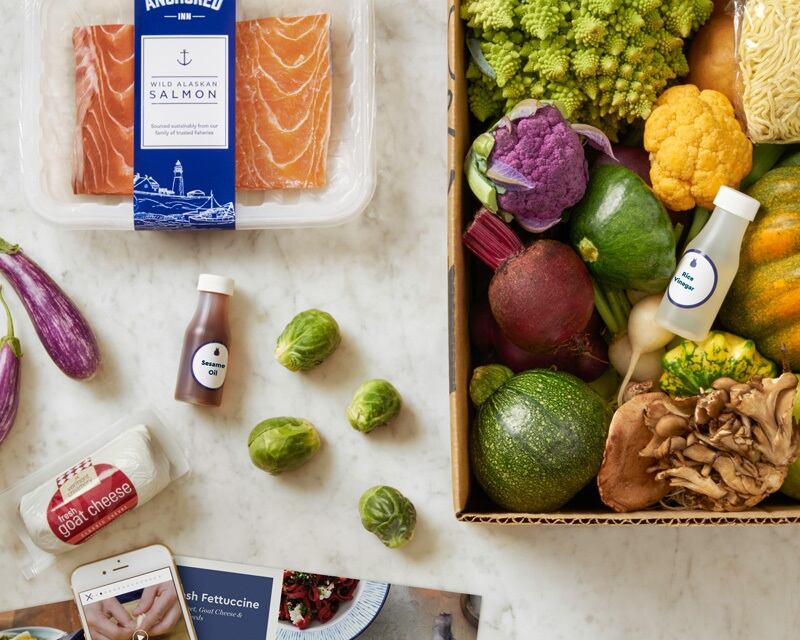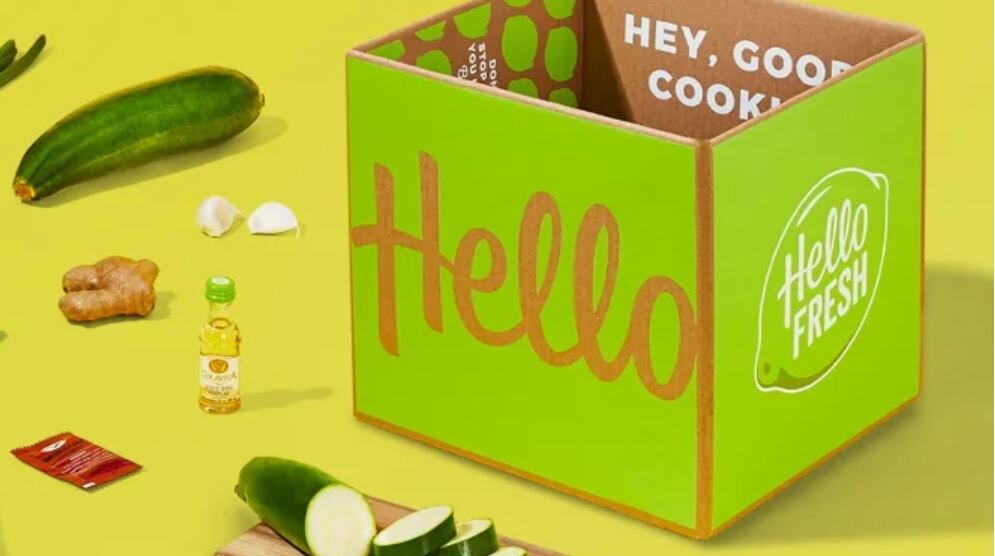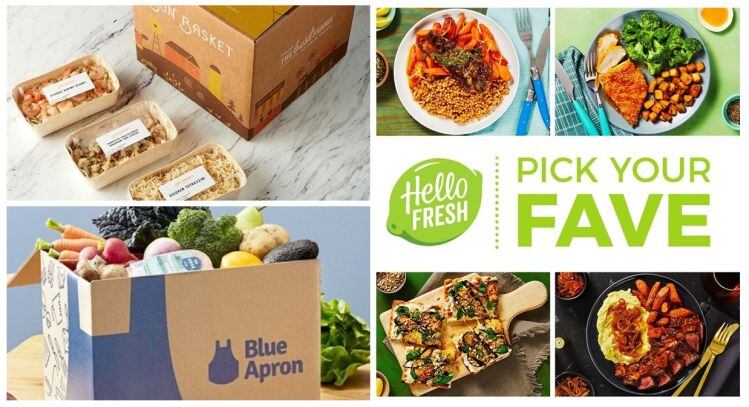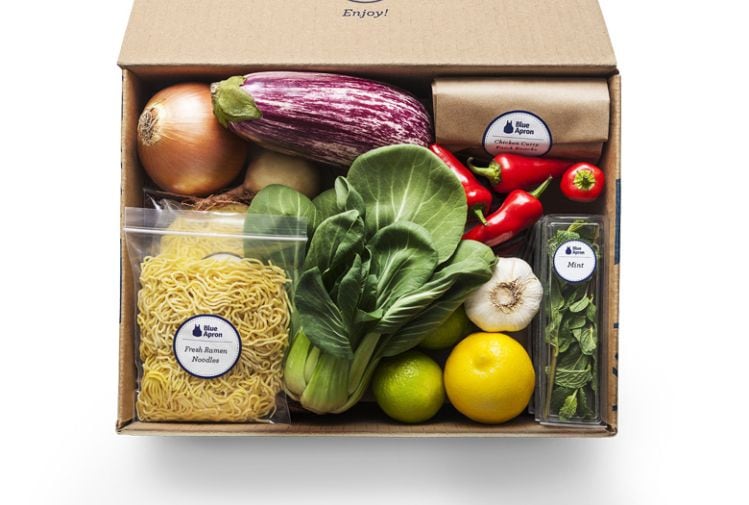Blue Apron stock has been on a downward trend since its initial public offering stock price of $140.10 in June 2017, but it has recovered from its three-year low of $2.28 in March 2020 to $12.24 per share as of July 29, 2020, representing an approximately 437% increase.
The growth can be credited, in large part, to the impact COVID-19 has had on consumer behavior as cooking at home and experimenting with new recipes has become the new norm for many consumers who find themselves eating out much less, said Blue Apron.
The recent tidal shift in consumer behavior is reflected in the company’s customer base as well, noted the company in its Q2 2020 financial results. For the 16 weeks ended June 30, 2020, Blue Apron gained 20,000 new customers reaching nearly 396,00 quarterly customers*, and “for the first time in five years” average revenue per customer was above $300, said Blue Apron CEO, Linda Findley Kozlowski.
“The customer additions in the second quarter came despite our deliberate decision to scale back marketing and promotional programs earlier in the quarter as we focused on building capacity in our facility centers to address the great demand,” said Kozlowski during the company’s Q2 2020 earnings call.
While the company doesn’t publish its churn rate (the annual percentage rate at which customers stop subscribing) publicly, Kozlowski said that the company has seen “re-engagement of existing customers, as well new customers coming into the pipeline.”
Blue Apron 'Premium' recipes gain traction
“As near-term trends for cooking at home have improved, the longer-term outlook for cooking at home similarly has been gathering momentum,” said Kozlowski.
According to a consumer survey of 1,005 Americans between the ages of 18-73 in April 2020, 54% of respondents reported cooking more due to coronavirus restrictions and 51% said that they will continue to cook at home even when the global crisis comes to an end.
“As people spend more time in the kitchen, we believe we are well positioned to offer a product that caters to a range of experience levels and balances customer preferences for both health conscious and more indulgent recipes,” she said.
Earlier this year, Blue Apron introduced its ‘Premium’ recipes, which require more advanced cooking techniques and ingredients variety to deliver an “elevated restaurant-like experience” at home for customers.
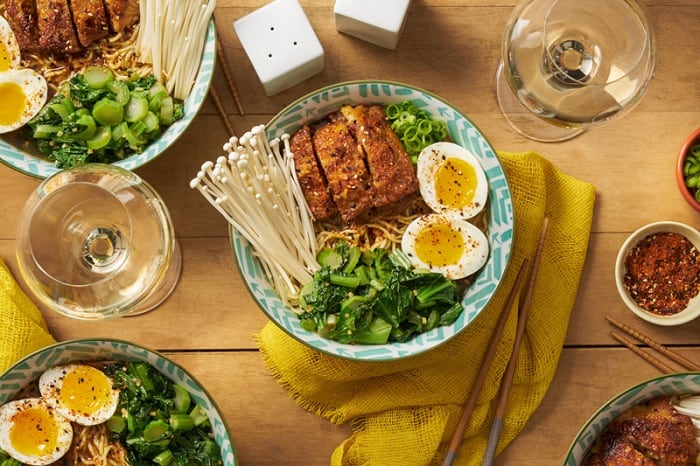
Its Premium meal kits offerings are sold at a higher price point ($14.99 per serving vs. $9.99 per serving for Blue Apron’s standard two-serving meals) and contributed a third of the 5% year-over-year increase in average order value, according to Blue Apron CFO, Tim Bensley.
“Among customers surveyed in mid-April who ordered Premium meals intent to purchase was strong, intent to purchase again was strong at 885 (on a 1,000-point scale),” added Kozlowski.
In addition, the meal kit company’s partnerships with WW (formerly Weight Watchers), the American Diabetes Association, and more recently HBO and AAA, have been one of its “strongest strategic levers” in driving new customer growth, according to Kozlowski.
Will home cooking continue post-pandemic?
Although consumers are spending more time cooking meals at home and may be open to trying new recipes, their desire for easy-to-prepare dishes that are ready in 15 to 20 minutes or less is stronger than ever, says Dr. James F. Richardson, author of Ramping Your Brand.
“Given that most consumers are more stressed than prior to the pandemic, the emotional availability for time-consuming cooking is most likely much lower,” he told FoodNavigator-USA.
However, Blue Apron’s cooking time of 25 to 40 minutes to fully execute its recipes remains a huge drawback for the company, he claimed.
"The average time to prepare these meals remains as high as it has been since the brand launched. Recipe technical complexity is also notoriously high (similar to Amazon Fresh meal kits).”
And when sit-down restaurants across the country re-open in greater numbers in the future, Blue Apron will see a large portion of its audience drop off, he predicted.
“I suspect that Blue Apron will suffer more than others, therefore, when fine dining re-opens...if it does, next year. Childless Blue Apron couples who may have increased orders and signed up this year will resume restaurant dining because it is a cultural experience crucial to our notions of 'fun' in that stage of life.
“Blue Apron's ability to scale will be tied less to its flavor profiles than to its ability to innovate recipes that are equally sophisticated yet only take 15-20 minutes to prepare. The latter would compete well against sit down dining post-pandemic. It's not going to be easy, but innovation never is."
*The company had more than a million subscribers in early 2017

